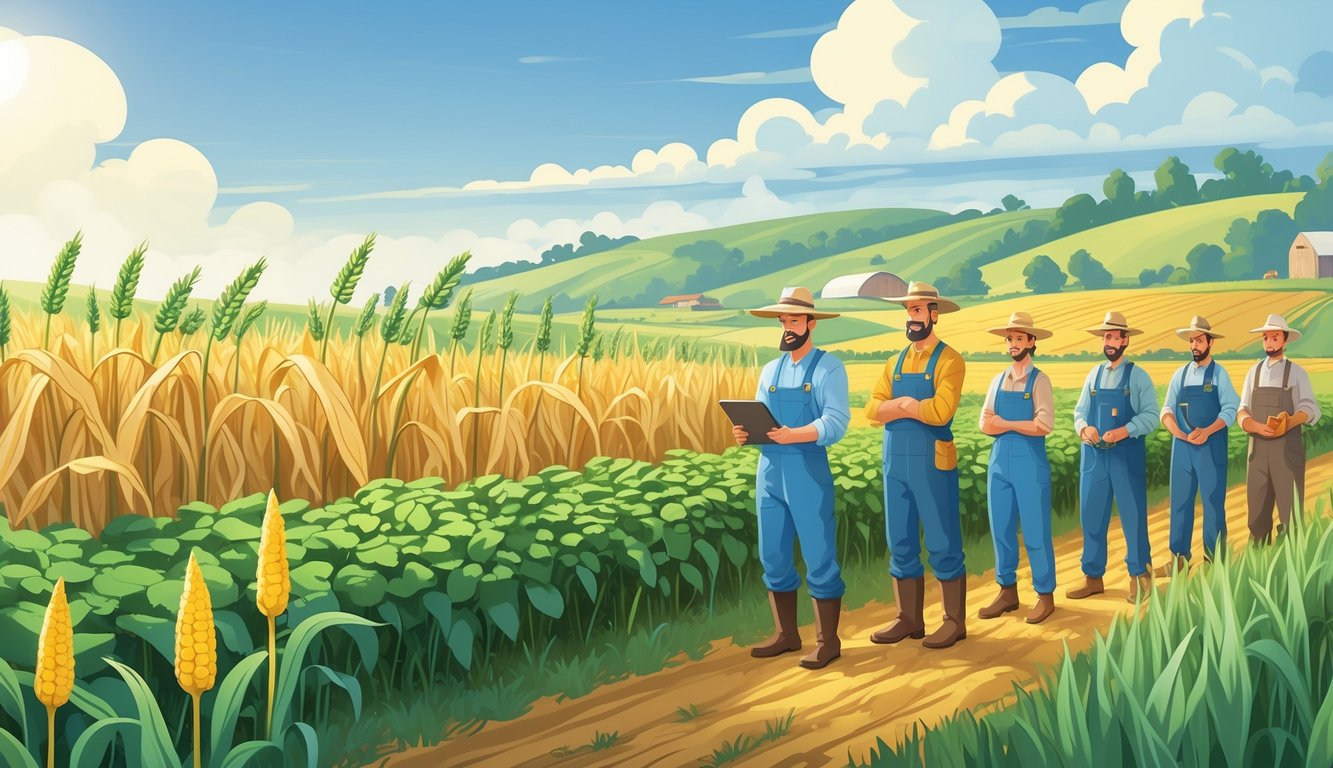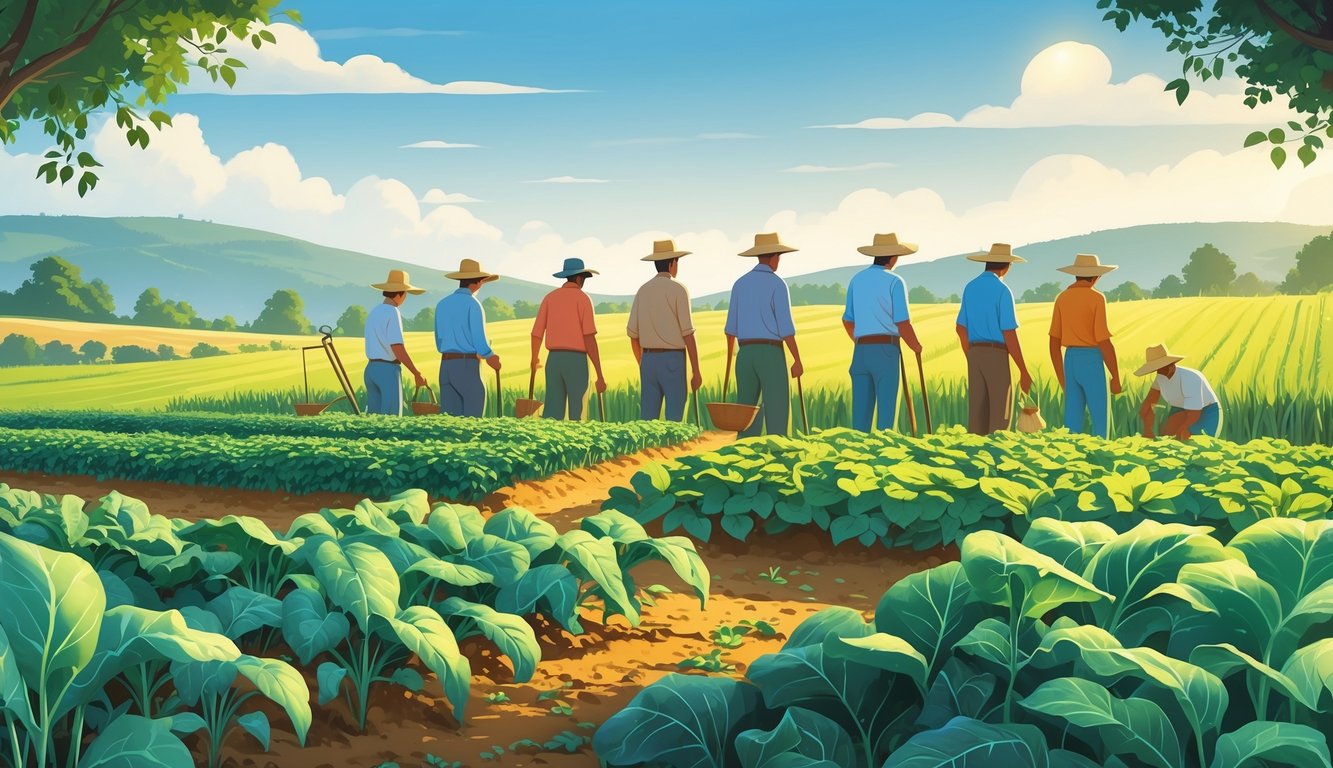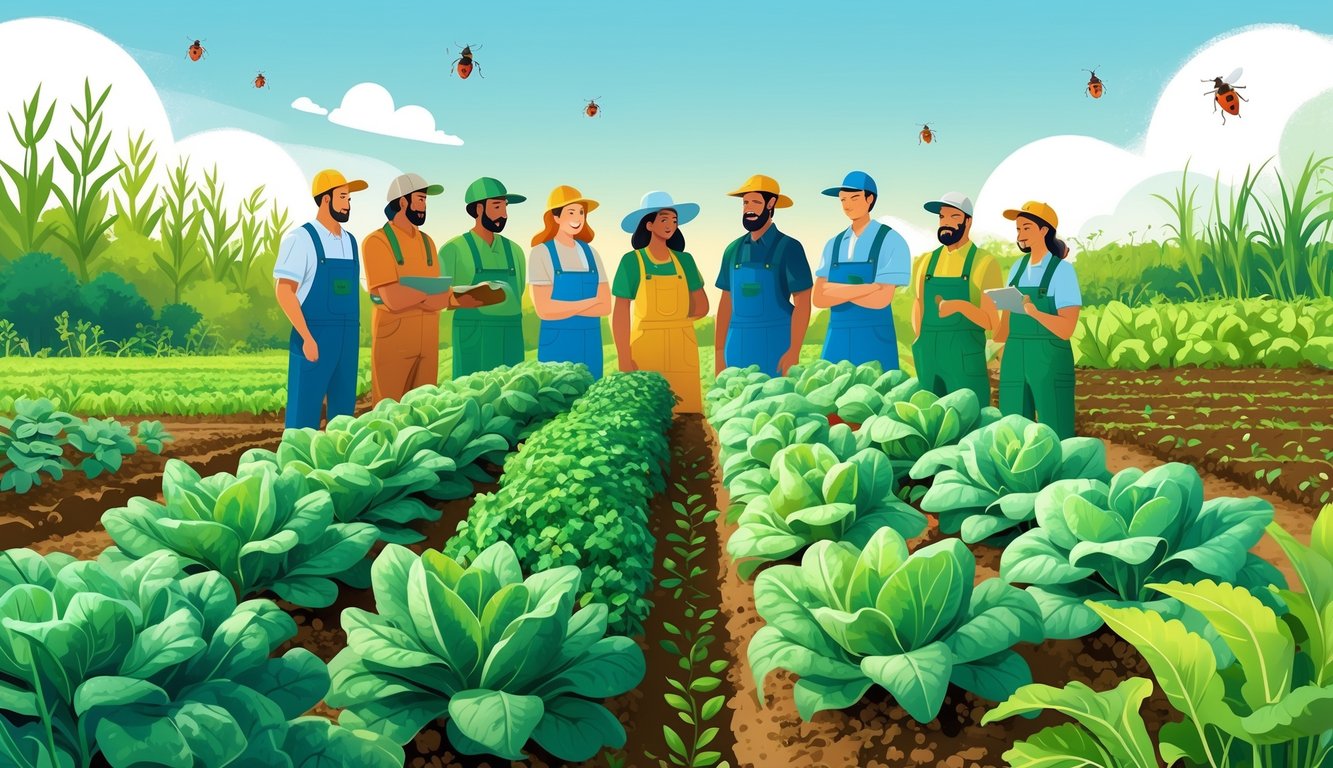
How Farmers Quietly Adopt and Benefit from Disease-Resistant Crops

Nobody’s putting up billboards about this stuff. But stand around the co-op long enough, some guy with mud on his boots will start rattling off how disease losses dropped and yields stayed weirdly steady—even when the field looked like a swamp. Seed reps love waving their glossy charts—profit up, sprays down, food supply barely blinks during a crunch because someone took a flier on the “newer lines.” Not that they’ll admit it out loud.
Adoption Patterns Among Growers
You think there’s some big reveal? Nope. Most farmers sneak disease-resistant crops in next to their old reliables and keep their mouths shut. Those big demos? Nobody cares. It’s more like, “Hey, did you see Bill’s corn survived last year’s blight?” and then a few more folks quietly switch seed orders.
I’ve watched it happen. Some swear there’s a “yield penalty,” others scribble yield and disease rates on the back of seed bags. Usually it’s, “Well, last year’s rot wiped out half the field, so I’m trying this.” Some mix in a few acres—call it insurance. Meanwhile, there’s always some stubborn uncle who refuses and then spends the next winter complaining about his ruined crop.
Nobody brags, but farm forums blow up after a bad season—photos, yield maps, the works. PR? Please. It’s just tired people trying to dodge another disaster.
Economic Advantages and Yield Security
Quick math on a coffee-stained invoice: fungicides chew up profit unless you’re lucky or a wizard with the sprayer. Breeder companies love their cost-versus-yield tables—sometimes the difference is peanuts, sometimes it’s a 20% bump and a fatter check. I called it magic once; the agronomist just rolled his eyes and handed me the Purdue Plant Disease Loss Estimates.
Food demand’s up, nobody’s planting more land. So we sneak in genes that fight off rust, wilt, whatever. My buddy skipped resistant wheat and watched his crop tank, while my stubborn seed held up. Price stayed good that year, too. Nobody brags, but yield security is everything—who wants to gamble the farm on weather roulette?
Food security? That’s not some UN headline. It’s boxes on a truck heading to town because some seed didn’t fold after a rough year. And the same neighbor who gripes about “newfangled seeds” is the first to cash the steadier check. Contradictions everywhere—never in the brochures, though. Not even on those fact sheets.
Reducing Reliance on Chemical Pesticides and Treatments

Every spring, I stare at the field and wonder if this year’s spray schedule will actually work. Some neighbors swear by “integrated” approaches, but nobody’s measuring air quality after a heavy spray—let’s be honest. It’s not just about skipping chemicals. It’s about balancing yield, soil health, and not getting stuck in the same crop-failure loop.
Lower Pesticide Use
Nobody’s bragging about spraying less when bugs are eating seedlings faster than you can replant. But the first time I tried disease-resistant lines—soybeans with Rps genes, potatoes that laugh at blight—the pesticide bill didn’t just shrink, it cratered. I read somewhere that European ag is addicted to chemicals, but research says matching genetics and field management can cut spraying by a third or more.
Skipping sprays doesn’t fix everything, though. Weirdly, rotating resistant crops led to fewer outbreaks the next year—maybe because pests had less to chew on. IPM isn’t just some extension office fad. One agent joked that spraying before scouting is like brushing your teeth with syrup. Resistance traits do half the work; the rest is letting nature and decent scouting pick up the slack.
Sustainable Alternatives to Chemicals
What drives me nuts? Half my neighbors think “sustainable” means buying organic and calling it a day. Real sustainable farming? Way more complicated. One guy swears by rotations and ladybugs—his wheat bounced back after rust nearly wiped him out. I tried resistant varieties with longer rotations—fields looked healthier, and weeds didn’t choke everything mid-summer. Resilience isn’t just a word; it’s right there in the yield numbers after a drought.
Getting out of the chemical rut means mixing it up: companion crops, cover crops, tweaking fertilizer for soil life. Recent research says IPM works best when you throw in resistant seeds and bio-treatments like Trichoderma or Bt sprays. Less cash to the co-op for chemicals, more saved for, I don’t know, a vacation (ha). Real sustainability? It’s stubbornly using every trick—resistant seeds, scouting, bugs that eat other bugs—because nobody wants to see “superweeds” or dead birds in the headlines.
Challenges and Limitations of Disease-Resistant Crops
Nobody tells you disease-resistant crops aren’t a magic fix. You think you’ve bought insurance, but the rules keep changing. And sometimes, the trade-off is giving up yield just to survive another round of pathogens. Turns out, those fancy defense genes sometimes bite into your bottom line.
Pathogen Adaptation and Resistance Breakdown
You swap fungicides for stacked-beet seeds, and somehow the pests still outrun you. Pathogens adapt faster than my phone battery dies—Phytophthora wiped out potatoes in Ireland, and now it’s soybean rust, same story, new crop. These bugs aren’t static—they’re hustlers.
Sure, resistance genes look like a silver bullet. But give it a few seasons and you’ll be reading about “resistance breakdown.” This research spells it out—microbes sidestep “bulletproof” genes, especially in humid, high-pressure years. I’ve sat through meetings where breeders admit, “Three good years, then… adapt again.” Complex traits just can’t keep up, especially when the weather goes off-script.
Someone always asks if rotating resistance genes is like changing socks. Maybe. What if you forget laundry day?